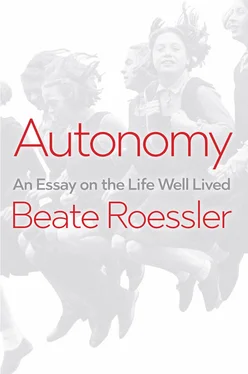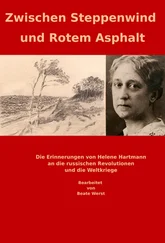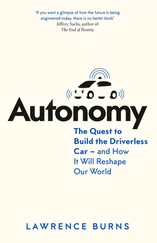This distinction between personal and moral autonomy has rightly become well established. Nevertheless, it is interesting to see that we can find a concept of personal autonomy even in Kant and, conversely, that contemporary ideas of personal autonomy draw upon the same qualities and abilities that form the essence of Kantian moral autonomy. Kant himself, with a view to the duty of human beings to “increase” both their physical and spiritual perfections, argues in The Metaphysics of Morals :
[w]hich of these natural perfections should take precedence, and in what proportion one against the other it may be a human being’s duty to himself to make these natural perfections his end, are matters left for him to choose in accordance with his own rational reflection about what sort of life he would like to lead and whether he has the powers necessary for it (e.g., whether it should be a trade, commerce, or a learned profession). 9
This in fact sounds like one of the examples used in analytical debates about personal autonomy: What should I do with my life? What sort of life should I lead? Thus, in some respects, the difference between Kant’s concept of autonomy and contemporary notions of personal autonomy is not as clear as it initially seems.
Now in recent years debates about personal autonomy have become highly differentiated and specialized. First, drawing on Kant (and as frequently and rightly found in the literature), it is reasonable to describe autonomy categorically as an attribute belonging to every person as a person. Beyond this, however, and contrary to Kant’s position, it also makes sense to describe autonomy as a capacity one may possess to varying degrees. Autonomy in a categorical sense, then, is attributable to individuals who in principle possess the unqualified ability to act autonomously and thus cannot be attributed to, say, small children or coma patients. Individuals are therefore considered to be autonomous above a certain threshold. Beyond this threshold, however, people may be capable of autonomy to greater or lesser degrees, i.e. we are speaking here of a graduated concept. In the first, categorical sense, autonomy serves as the basis of, for example, one’s right to defend oneself against paternalistic interventions by the state or other individuals, while debates surrounding the idea of personal autonomy in recent years have aimed to establish a concept of autonomy that can be attributed in varying degrees to autonomous individuals. I will return to this in greater detail below.
Mill’s concern was that we should be able to lead our personal lives as we want, without hindrances or constraints, so long as we are not harming anyone else. “The only freedom which deserves the name is that of pursuing our own good in our own way, so long as we do not attempt to deprive others of theirs or impede their efforts to obtain it.” 10 Our own good in our own way – this is the hallmark of modern individual freedom, which when in doubt discards tradition and convention, asking only: How do I want to live? What kind of person do I want to be? Mill certainly saw himself as an opponent of Kant, arguing that if we did not wish to choose and live our lives ourselves – freely – then we would have
no need of any other faculty than the ape-like one of imitation. [. . .] A person whose desires and impulses are his own – are the expression of his own nature, as it has been developed and modified by his own culture – is said to have a character. One whose desires and impulses are not his own, has no character, no more than a steam-engine has a character. 11
Therefore only people who are free, who “choose for themselves,” who need and make use of all of their abilities and thus have character , truly do justice to human possibilities. This is a concept of personal liberty that clearly goes far beyond the idea of moral autonomy. 12Mill speaks here primarily of individual liberty, and only rarely of autonomy, but current theories that draw on Mill frequently use the term autonomy in this context.
Negative freedom, positive freedom, autonomy
What, then, is the connection between freedom and autonomy? Philosophical usage of these two terms is not always clear, and the relation between them is disputed. Some authors identify liberty with autonomy, while others maintain that there is an important difference. As I would now like to show, autonomy should be conceived of as the concretization of a properly understood concept of freedom. 13
The conceptual distinction between negative and positive freedom is famously found in an extraordinarily influential essay by Isaiah Berlin, though the idea of such a distinction is actually much older, appearing in a similar form, for example, in Benjamin Constant. Negative freedom as Berlin defines it refers to conceptions of freedom as essentially the absence of obstacles and restrictions, as seen in classic liberal approaches by the likes of Hobbes, Locke, and Mill. Purely negative conceptions can also be found in contemporary theories of freedom, as when Hayek describes freedom as “that condition of men in which coercion of some by others is reduced as much as is possible in society.” 14In contrast to such purely formal, negative concepts of freedom as the absence of coercion, positive conceptions view freedom as the ability to pursue certain options, realize certain abilities, or lead a self-determined life. In any event, then, positive freedom prima facie means that individuals have control over their ability to choose what they themselves consider to be meaningful options for themselves, to do what they believe expresses their true self or the kind of person they wish to be.
Berlin, however, precisely wants to show what problems may be linked with such a notion of freedom, arguing, for example, that it might lead to the question of what represents a “meaningful option” being decided in terms of collective self-determination, with this collective decision then overriding the will and the negative liberty of the individual person . This would imply that the collective knows what is best for the individual, and not individuals themselves. Positive liberty, in this case, rests not on the autonomy of the acting subject but on a collective autonomy such as that developed by Rousseau, and on the idea that others may know better what makes me free than I do myself. 15For Berlin, all positive conceptions that see freedom exclusively in the realization of certain options potentially end in paternalistic or even dictatorial theories (and societies). Hence he clearly sees the negative concept of freedom as superior to the positive. Only negative freedom represents the kind of liberal freedom that allows individuals themselves to decide how they want to live their freedom.
Charles Taylor, however, demonstrated early on that these two concepts of freedom need not be mutually exclusive, arguing that we can speak about the absence of obstacles – Which are more important? Why do we not want precisely these restrictions? – only if we also have some idea of what we actually want with our freedom. Thus it is neither sensible nor possible to draw a clear boundary between negative and positive freedom. The former always points to the latter (and vice versa) or, in Taylor’s terminology, negative opportunity-concepts always point to positive concepts of self-realization. 16
We value negative freedom because we want to be free to do certain things , to be a certain person , to lead our lives, as Mill says, in our own way . A negative concept of freedom is not sufficient to explain this, however. If we now consider positive liberty, we will see that, in order to be called free, we also need good or in any case desirable options, worthwhile opportunities to live our negative liberty. Freedom from obstacles, being able to decide between five equally bad or banal and undesirable options, may suffice for a value-neutral definition of liberty and choice, but it does not adequately explain what we mean when we talk about freedom, its meaning, and its value for us . 17
Читать дальше












